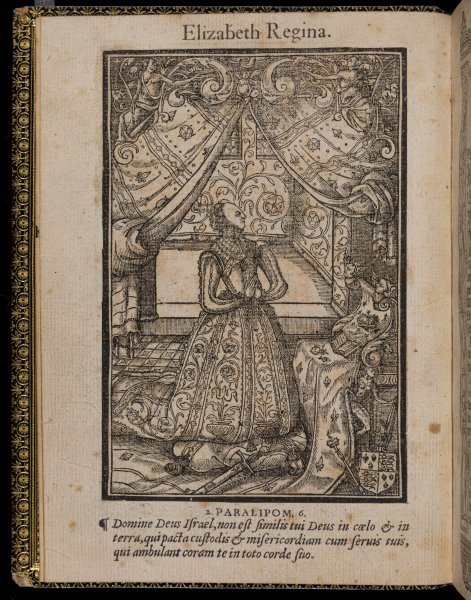Imagine a society where every single adult was trained in – and practised – composing short original texts, every single day. At the turn of the seventeenth century, changes in writing private prayers underlay major developments in drama. Required to pray independently, convinced their private prayers had an impact on the course of events, the laity developed literary – indeed, specifically dramatic – skills: in characterisation, in counter-factual narrative, and in striking verbal forms.
In the second wave of the Reformation in Britain, published advice on prayer and model collections quadrupled. Prayer was celebrated as a vital force, freeing social energies by its elevated excitement, prophetic of what should be and could be. Whether in ‘best-sellers’ (say, by John Brinsley, Samuel Hieron, or Thomas Sorocold) or one-off pieces (say, by George Downame, Thomas Tuke, or James I), across doctrinal positions, regardless of the rank or vocation of their intended readers, there was uncharacteristic agreement: for the first time ever, all lay people were expected to compose their own prayers, in their own language, about pressing issues of family, work, and state.
Today, we are acutely aware that people of all faiths try to take political control in the narratives they tell about themselves, in their prayers. Literary critics (such as Ramie Targoff, Timothy Rosendale, Brian Cummings, and Daniel Swift) discuss the drama of the liturgy, and historians (such as Alec Ryrie, Jessica Martin, Kate Narveson, Femke Molecamp, and Natalie Mears) warily relate private prayer to poetry.
I’m working on a project to demonstrate the explicitly dramatic and experimental aspects of private prayer, drawing especially on Shakespeare – who depicts praying more often than his five major competitors put together. There are five strands to the investigation.
First, all advice texts debated how far prayer should be set in advance or left to the inspiration of the moment. They worried that reading or reciting others’ prayers (or even just thinking up words for a prayer in advance) might try to limit the Holy Spirit’s promptings, making an idol of human words. Champions on both sides used a striking vocabulary: ‘inspiration’, ‘instinct’, and ‘quickening’ vs. ‘rules’, ‘moulds’, and ‘forms’. Simultaneously, secular literary theorists began to value fiction for its originality, rather than for the craft of imitating canonical works. So how did developing conceptual frameworks of prayer and creativity converge, especially over how preparation yielded to improvisation?
Second, developing skill in characterisation was needed to pray with feeling on behalf of someone else. Collections of prayers, for instance, encouraged kitchen maids to empathize with war heroes, or gentlemen with pregnant women, or merchants with coalminers. The situation of each was detailed in lengthy and concrete ways. Moreover, texts advised that the prayer be varied through four genres (praise, thank, confess, and request), and that the pray-er move between different addressees during the prayer (the pray-er, the person prayed for, the persons of the Trinity). Dense, searching, and psychologically-sophisticated prayers resulted, about people in desperate or extraordinary situations. So what was the artistry needed in putting up a prayer for another person? Conversely, did striking situations in the prayer collections make it onto stage?
Third, radical narrative lines were followed up in prayer. Pray-ers referred to themselves as marginalised (sick, criminal, in chains), but at the same time as kitted out with the almighty weapons system of prayer. Prayer thus provided a counter-factual history, a thought experiment in alternative outcomes. In personal terms, prayer was a form of ethical and pragmatic life coaching, where the pray-er steeled himself to unpalatable actions. So what were the imaginative possibilities offered by focusing on ‘what ifs’? Reversing this, did staged prayer illuminate potential plot-lines and options open to a character?
Fourth, the soliloquy was the primary dramatic sub-genre of the period. Advice texts argued that God was present in the language of the prayer, making it a dialogue. Prayer started to fail if (or rather, when) it lapsed into a soliloquy, addressing God as a fictional projection, an idol. Moving tones of voice and gesture were recommended, to keep God in mind. Yet the pray-er was also advised to keep checking on the quality of his prayer. So did advice on alternating between acting and reviewing in prayer respond to the evolving technique of soliloquising? Can such advice suggest how a player might act this form? Or how a written form (prayer or player’s part) was spoken?

Finally, staging prayer raises fascinating methodological questions. Today, actors report that when a character speaks privately to the audience, or radically shifts his perspective, spectators may pay more attention, in a ‘hot dynamic’ – or they may start laughing or squirming. Both responses arise in watching characters pray, both in the acting audience on-stage and the real audience off-stage. So was prayer on stage ever felt as real, and what might be the consequences?
Ceri Sullivan is Reader in English Literature at Cardiff University. She is the recipient of a Leverhulme Trust Fellowship for her research into private prayer in Shakespeare’s Histories.
